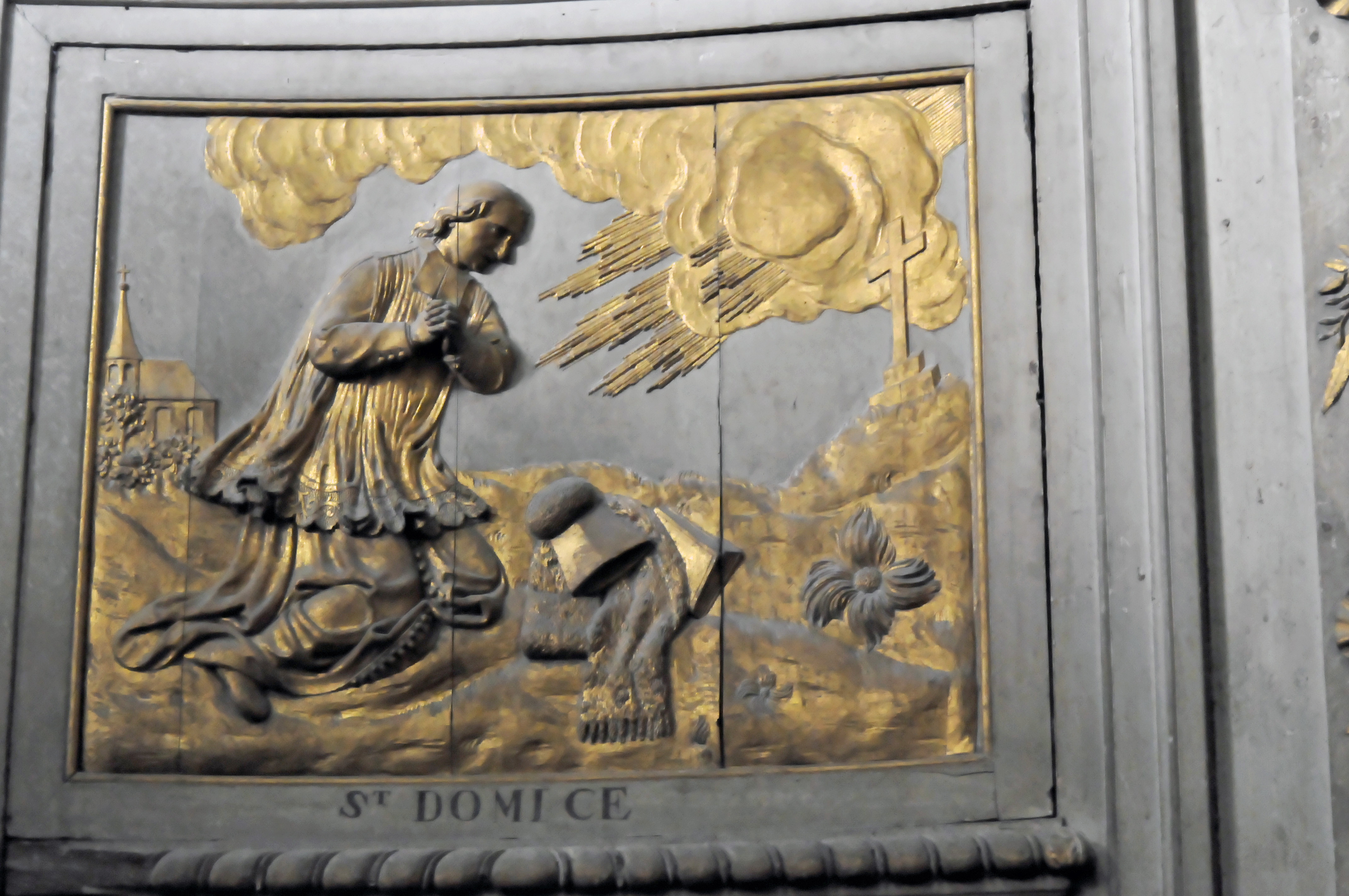Saint Domice, porte de la chapelle, cathédrale d'Amiens
Saint Domice
Prêtre
ou diacre du diocèse d'Amiens (8ème s.)
Il se retira comme
anachorète dans la solitude.
"Chapelle Saint-Domice: Située sur la route de
Fouencamps à Hailles, sur le bord de l'Avre, au lieu d'ermitage du Saint,
ancien chanoine de Saint Acheul, il y vécut de 727 à 755 et y mourut le 23
octobre vers l'âge de 80 ans.
La chapelle actuelle en pierre de craie fut édifiée en 1755 pour remplacer
celle en ruine construite en 1298 par Enguerrand de Fouencamps.
A l'intérieur deux plaques de pierre gravées rappellent la légende des
grenouilles avec Sainte
Ulphe (jeune ermite de la vallée de la Noye
qu'il avait prise en protection) et leurs marches quotidiennes vers l'abbaye de
Saint-Acheul pour y entendre les matines..."
Jean de
Francqueville, Sainte Ulphe et Saint Domice
Domitius of Amiens (RM)
8th century. This is another story of a friendship leading to perfect love of
God. Not far from Amiens, in northern France, there is a small river called the
Noye which, after flowing through some low-lying and marshy ground, joins
another small river called the Avre. Together they then join the River Somme
and flow down to the sea. They have been there since the beginning of time, and
they will probably be there at the end of time.
In the 8th century
there lived on the banks of the Noye a young girl named Ulphia who was filled
with longing to lead a life of perfection. At the same time there lived on the
banks of the Avre a deacon of the church of Amiens named Domitius, who was no
less eager for the same perfection. Their hermitages were barely a mile apart,
and Ulphia often sought the counsel of Domitius, who instructed her in the
great prayer of the Church and led her to God. Their 'mystic life in common'
lasted for 30 years, from about 730 to 760.
The legend speaks
of 'a good and ancient man who beard and hair were as white as snow,' and who
walked with a staff to support 'his great age and infirmity.' The friendship
that bound him to the holy girl who was less than half his age must have seemed
strange to the people who lived nearby. It is said that Domitius once silenced
all the frogs in a pond, but perhaps the frogs were human- -men and women,
whose tongues were set wagging by the story of the two hermits. And if Domitius
succeeded in silencing them, then it was a far greater miracle than silencing a
few small creatures.
They used to go
together on foot to recite the Office in what was then the cathedral of Amiens.
It was a mutual exchange of services: Ulphia tended Domitius, and Domitius
rewarded his devout daughter by teaching and explaining to her the Holy
Scriptures. "They were," says the legend, "of a like will and
spirit, chaste and devout."
Their lives were
like the two rivers on whose banks they lived, two rivers which flowed through
marshes and swamps and then joined together and flowed to the sea. Ulphia
passed through the marshes of this world and entrusted herself to Domitius.
Their course together was one of prayer, penitence, solitude, and self-
forgetfulness that, after 30 years, eventually brought them to their triumphal
entry into paradise. As the two rivers flowed together, so did their lives, and
as the waters of the rivers were finally united with the sea, so were they
finally united with God. "He who drinks of the water I shall give
him," says Our Lord, "will not thirst" (Encyclopedia).
SOURCE
: http://www.saintpatrickdc.org/ss/1023.shtml
Saint Domitius of Amiens
Saint Domitius of Amiens
Profile
Eight-century
deacon
and hermit near Amiens, France.
Spiritual teacher of Saint Ulphia
of Amiens.

